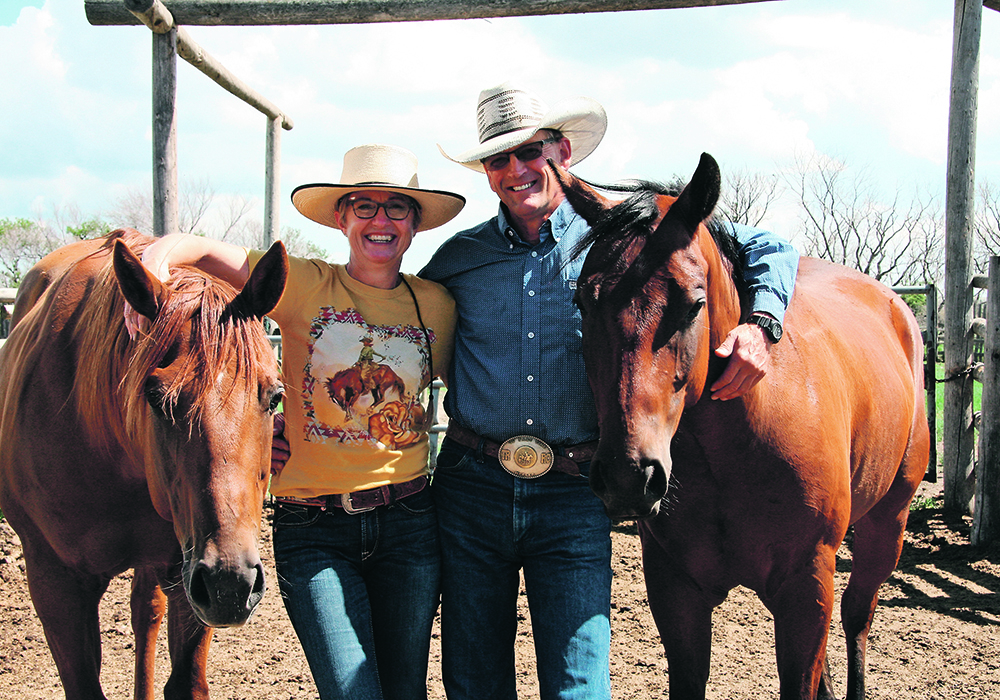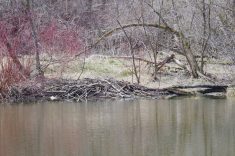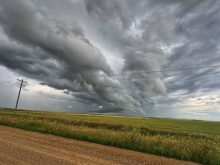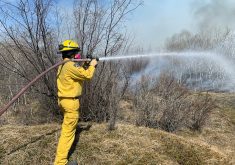On the Farm: Water is always a limiting factor for these Sask. ranchers, who recently received a stewardship award
ELROSE, Sask. — The third year of drought has Gerald and Patti Anhorn contemplating what more they could do to drought-proof their Saskatchewan ranch.
The winners of the 2022 provincial TESA for environmental stewardship award have already done extensive work to cross-fence for rotational grazing and develop dugouts, wells, pipelines and springs.
“There wasn’t a lot of water available when we came here,” Patti said, referring to limited water sources when they established Windy Ridge Ranching in 1999 on the northern slopes of the Coteau Hills.
She had grown up nearby and spent a lot of time as a child where she now lives. Gerald grew up on a mixed farm northwest of Maple Creek. Patti became a nurse and he trained as a heavy-duty mechanic and they spent 10 years in Brooks, Alta.
But their dream was to ranch and when the opportunity arose to buy their property, they took it.
They bought the land and the purebred Hereford herd and began to make it their own. There are about 8,500 acres of native, tame and cultivated land, most of it deeded but some leased.
Today, it’s almost completely a Black Angus operation with some Hereford influence still in some of the cows.
“They’re easy to look after, not a huge-framed animal that requires huge amounts of feed,” Patti said of the Angus choice.
They still use some Hereford bulls on their cows for a desirable cross, but Gerald said there isn’t a straight-bred Hereford on the place now.
They calve out about 400 cows, keeping some yearlings and backgrounders.
“We grass about 200-plus yearlings, including replacement heifers,” Gerald said.
Windy Ridge is named for the top of the hill where it is indeed always windy. The land has little natural shelter. Still the cattle share it with white-tailed and mule deer, coyotes, foxes and other typical wildlife. There are also species of concern such as Sprague’s pipit and the loggerhead shrike.
Water has always been a limiting factor because runoff isn’t guaranteed. Now that drought has affected them for a third consecutive year the Anhorns have decisions to make.
“We will downsize this fall if we don’t go into the winter with water, meaning soil reserve moisture to grow grass,” said Gerald.
They manage their native range carefully. The grazing system when they took over was less efficient and the native prairie had limited water sources.
Gerald said planting earlier maturing tame grass on some marginal land has alleviated the pressure on native grass so it can be grazed later in the season.
Even during this drought, he said some rain on the tame pasture in June “really saved our bacon.”
They have developed numerous water sources since they took over the land. Recently, they drilled a well in the native grass and move the water by pipeline to serve the entire native pasture.
“We’ll be using a generator on propane to pump the water,” Gerald said.
He has cameras set up to monitor the troughs and receives photos twice a day so that he can be sure the system is working.
Patti said they have multiple solar sites as well.
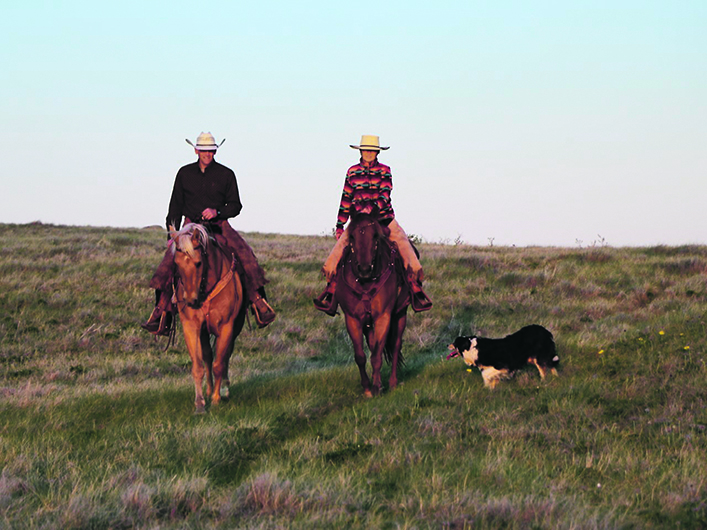
The water behind a large dam in the calving field has never been as low as it is this year and Gerald said the ground hasn’t frozen the last two winters.
As challenging as this drought is, they said the early years were harder. They were coming off the drought of 2001 and 2002 when BSE struck the entire industry in 2003.
If that had happened now, they could handle the hit a little easier, but they missed the high in the cattle cycle and learned to become even lower cost producers than they were.
Some of their marginal land is cultivated to produce greenfeed or for swath grazing.
They say they have improved soil organic matter through on-field feeding and continuous cropping. As well, these lands offer more natural shelter for the cattle than the slopes do.
They’ve taken advantage of government programs offered for water development and perennial cover and completed an environmental farm plan.
They’ve also given back. Gerald is a lifetime member of the Saskatchewan Stock Growers Association and served as Zone 7 director for more than 15 years. The Anhorns used the former federal Monet pasture for years. Gerald served as secretary-treasurer and then on the transition committee, and continues to be on the board.
The Anhorns participate in numerous educational events related to beef production and have hosted field days on their range. They are partnering with the SSGA Foundation, with federal funding, to work on habitat enhancement for various species at risk.
They raised their son Carter and daughter Nicole on the ranch and are now looking at what’s ahead. Carter is an engineer working in the mining sector and Nicole is an agrologist who lives on a grain farm with her husband Austin and daughter Hadley.
“Help is an issue,” said Gerald. “You don’t know their contribution until they’re gone.”
They’ve had a hired man on staff for about eight years but otherwise do all the work themselves.
If it comes down to selling, they say they will do what the previous owner did: select their successors.
“He was very selective and didn’t want it split up,” said Gerald.
“We were very lucky to be chosen,” said Patti, adding he told them he never regretted selling to them.
“We will be in the same boat. We’re very picky about our grass management.”




